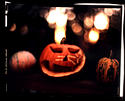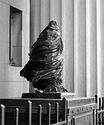Foma FV3 is D76/ID-11, but the commercial versions have changed slightly. In a Patent Ilford show a referance developer which appears to be ID-11 but with double the Borax.
It's thought that commercial D76 is probably D76H, Ilford used similar buffering in their Commercial PQ variant of D76.
Ian
Ian, I think you are confusing D-76H with D-76d. It is D-76d which is the buffered-borax formula. D-76H as devised by Grant Haist hence the `H` is the basic D-76/ID-11 formula with the hydroquinone omitted and the Metol raised to 2.5 grams per litre of stock.
To me, D-76H isn`t a developer of the D-76 type, but a weak D-23 variant with a borate added to it. Think about the replenisher for D-23 (DK-25R) and you will see what I mean.
I`m not sure about the commercial D-76 being D-76d despite what the MSDS says as I believe that the boric anhydride mentioned might be something to do with stabilising developers which have been compounded into single-powders as Kodak do.
You will have to check out the patents for single-powder developers.
The formulary in the BJP annuals show that the development times for D-76d need to be extended by anything up to around 25% compared to the standard D-76/ID-11 formula. D-76d is said to give higher base fog as well.
For further reading about buffered-borax MQ and PQ developers, read `The British Journal Photographic Almanac 1957, pages 138-141 by A.J Axford and J.D Kendall of Ilford Ltd.
You can see the development times for Fomadon-P (D-76d) on the Digital Truth site which I assume are the times that Foma recommend.
I would be interested in finding the Ilford patent that you mentioned.








